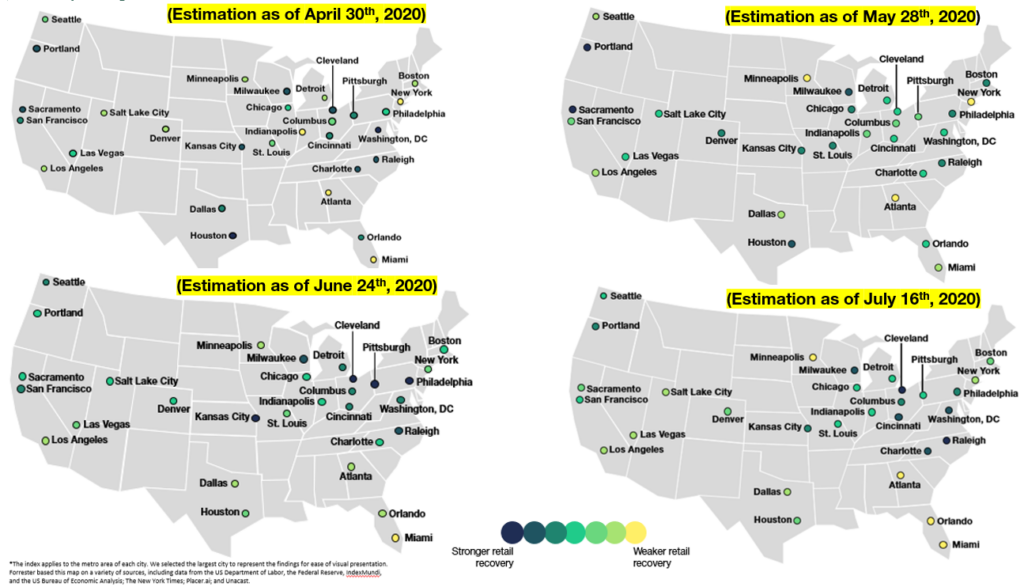Insights From Forrester’s US Retail Recovery Heat Maps (April – July 2020)
Over the last three months, we have estimated how the retail economies of 30 major US metropolitan areas are recovering from COVID-19. By aggregating 11 metrics (across retail sales, local economic indicators, and virus spread), our model predicts that these metropolitan areas will face differing levels of COVID-19 disruption. For these metrics, we looked at US metropolitan-, county-, and state-level data on:
- Prior dependency on retail. We looked at retail sales per capita, retail sector employment per capita, and estimated retail GDP.
- Severity of the COVID-19 outbreak. We looked at the size of outbreak per capita, per capita deaths due to COVID-19, how fast cases are increasing, and the number of new unemployment filings.
- Remediation efforts. We looked at estimated social distancing data, foot traffic in retail locations by state, and how proactive the stay-at-home orders were in each city.
Here is what we have seen over three months:

April 30, 2020
- Metros with the least disruption: Houston, Washington
- Metros with the most disruption: Atlanta, Indianapolis, Miami, New York
May 28, 2020
- Metros with the least disruption: Portland, Sacramento, San Jose
- Metros with the most disruption: Atlanta, Minneapolis, New York
June 25, 2020
- Metros with the least disruption: Cleveland, Kansas City, Philadelphia, Pittsburgh
- Metros with the most disruption: Miami
July 16, 2020
- Metros with the least disruption: Cleveland, Raleigh
- Metros with the most disruption: Atlanta, Miami, Minneapolis, Orlando
Key takeaways: In April, we saw the weakest retail recovery in cities with large COVID-19 outbreaks and high unemployment and in destination cities with a high dependence on tourist foot traffic. By June, the curve appeared to be flattening, as new case rates were holding steady across the board and some areas saw slightly improved foot traffic and unemployment. July’s estimated retail recovery is weaker in southern US and western US cities, likely tied to cities reopening, less social distancing, increasing new case rates, and decreasing retail foot traffic.
If you would like to see the data behind these metrics or see more metropolitan areas, please contact your Forrester account representative, schedule an inquiry with me, or email Madeline Cyr, researcher, at mcyr@forrester.com.
